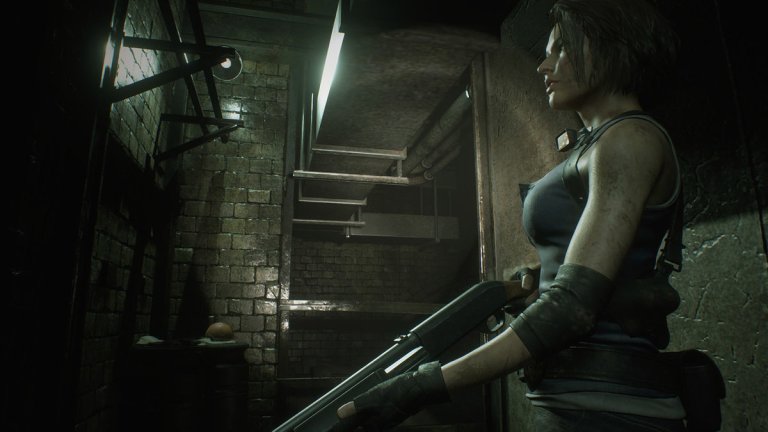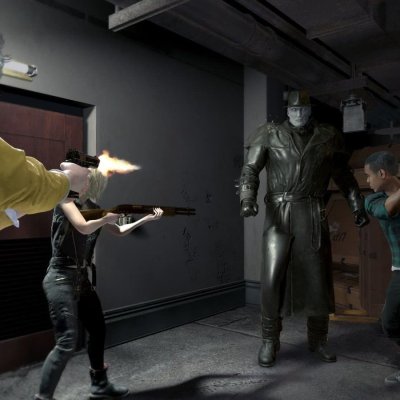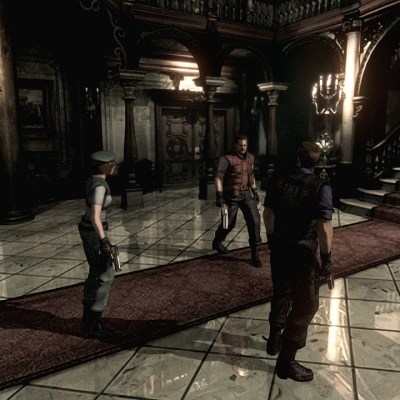Resident Evil 3: How Capcom Modernized the Classic Survival Horror Game
Resident Evil 3 producer Peter Fabiano walks us through the process of remaking Capcom's classic surival horror game.

Modernizing a classic is always a risky endeavor, especially when it comes to a game as beloved as Resident Evil 2, which is why most prestige studios tend to leave their backlogs alone beyond releasing remastered collections. Capcom has embraced revisiting the past and reimagining it for a new generation. The Resident Evil 2 remake was nothing if not a labor of love and one of the best releases of 2019. And in many ways, the latest Capcom horror remake is modeled after last year’s experiment.
The Resident Evil 3 remake brings another survival horror classic back from the dead, complete with a few improvements that audiences (and developers) could have only dreamed of in 1999. The game’s Raccoon City has been recreated with modern visuals, and the combat has been completely retooled with an over-the-shoulder camera and updated shooting mechanics.
Den of Geek had a chance to catch up with Resident Evil 3 producer Peter Fabiano via email just before the release of the game and he shed some light on how Capcom approached this particular remake and what’s changed since you first played it more than two decades ago.
Asked what Capcom learned from remaking Resident Evil 2 and how those lessons helped the team working on Resident Evil 3, Fabiano reveals that the timing of the releases — just one year apart — didn’t really allow for much short-term retrospection.
“There was some overlap in the development of the two titles so we couldn’t really take much from a post mortem,” Fabiano says. “But we certainly were able to see what the RE2 team was doing and inform some of what we did for RE3. For starters, both utilize RE Engine and feature an over-the-shoulder camera.”
Capcom’s RE Engine, which is actually short for Reach for the Moon Engine and not “Resident Evil Engine,” has been the foundation for much of the franchise’s recent success. Since the release of the excellent first-person Resident Evil 7, Capcom has been twisting and reshaping this foundation to relive its past nightmares, and it’s been key in modernizing its classic third-person horror games.
But while the Capcom team was focused on making Resident Evil 3 feel fresh and modern, Fabiano says that it was also important to honor the original vision. Fortunately, Capcom was able to bring some familiar faces from Resident Evil 3‘s past to the remake team.
“We were fortunate to have some of the original members that worked on the 1999 RE3: Nemesis, including the director Kiyohiko Sakata (lead programmer on the original),” Fabiano says. “That really helped us to keep on the vision but make some changes that would work better for the reimagining.”
The making of the original is a bit of a curiosity. The project that was eventually released as Resident Evil 3: Nemesis was originally being developed as a smaller spin-off, while Resident Evil 2 director Hideki Kamiya set to work on the third installment. But when Sony announced the PlayStation 2, Kamiya’s Resident Evil 3 was scrapped and his team moved on to the first version of the next-gen Resident Evil 4, which never saw the light of day. Meanwhile, the spin-off led by director Kazuhiro Aoyama became the third main installment.
As lead programmer, Sakata was a vital part of the original game’s development with a deep knowledge of the systems that made Resident Evil 3 the classic we remember today. This put him in a unique position to evaluate how the experience could be improved for a new generation of players.
The remake is a more straightforward and fast-paced experience than the original that covers Jill Valentine and Carlos Oliveira’s escape from a zombie-infested Raccoon City while evading a bio-engineered monstrosity known as the Nemesis. It’s a more action-oriented and hectic game complemented by the original title’s dodging mechanic, a vital part of the many boss battles against the Nemesis, who pursues you throughout the campaign with a laser-targeting rocket launcher and flamethrower. You’ll spend most of the game shooting, running, and dodging until the credits roll.
Beyond replacing the top-down fixed camera angle of the original and limited shooting mechanics for an over-the-shoulder system, Sataka also focused on improving the pace of the story, the character designs, and the scope of the environments, according to Fabiano.
“The director wanted to be able to tell one consistent story this time around. We were able to better develop characterizations, especially in the relationship between Jill and Carlos. In addition, we expanded upon the look and feel of Raccoon City itself. It’s almost like its own character in the game, beginning to fall apart but still holding on to bright areas of life.”
While the original was designed to feel like a more open-world experience largely set in the streets and varied locations of Raccoon City, as opposed to the haunted house-like environments of the first two games, Resident Evil 3: Nemesis feels pretty cramped by today’s standards. At times, its cluttered, apocalyptic streets still feel like the long hallways of the Spencer Mansion. With the remake, Capcom wanted to get closer to the original team’s vision of a more open Resident Evil.
“You’ll see a much more vibrant and expansive Raccoon City with updated graphics and more areas to explore,” Fabiano says. “It’s not an open-world game, but there are more open spaces.”
Protagonists Jill and Carlos also received a makeover. Gone are the light blue tube top and short skirt Jill wore in the original adventure, replaced by a more sensible outfit of a tank top and blue jeans. Carlos sports a much grittier look, his hair noticeably shaggier than his perfectly-combed ‘do from the ’90s.
“Jill needed to stand out within the game space and graphics of the time. With the reimagined version, we designed her to fit in the modern environments we created, and made her feel believable in that setting while still feeling like the Jill we all love. We wanted to make Jill feel resilient, able to survive all sorts of things thrown at her,” Fabiano says. “The same can be said for Carlos. In his case, we wanted him to feel like a real partner to Jill. You’ll see more of their personalities come through with modern-day voice acting and performance capture.”
Nemesis changed too, in big and small ways.
“His AI and visuals have been updated from the original,” Fabiano explains. “Nemesis is way more nimble and agile than he was. He can use his tentacles to grab Jill and jump long distances to appear right near you. He also has the ability to use weapons. That was one of the ways that we wanted to demonstrate that he has a higher level of intelligence. Although he’s a prototype version of a bioweapon, he’s the evolution of a Tyrant.”
Fabiano also reveals that Art Director Yonghee Cho “went through a number of iterations, and when he presented the version of the one you see in the game today, the game director knew right away, that was the one.”
Although way less blocky than his PlayStation counterpart, the new Nemesis also highlights elements that made the original model so scary, such as the creature’s mutated and muscular flesh and his razor-sharp teeth. Running into the modern Nemesis should still get your blood pumping.
Resident Evil 3: Nemesis was the last of Capcom’s original trilogy of survival horror titles, and in many ways, it’s a culmination of that era of game design. It was ambitious in its efforts to create the feeling of a bigger world as well as the way it implemented a choice-based “fight or flight” system that added a “choose your own adventure” element to the series. The game also showed how the horror formula could be tweaked to include more action, foreshadowing many of the installments that followed, especially the Black Hawk Down-inspired Resident Evil 5 and the confused Resident Evil 6.
These days, the game is slightly overshadowed by the superior Resident Evil 4, which not only completely upended fans’ expectations of the series in the early 2000s but changed the course of third-person action games forever with its over-the-shoulder camera mechanic. In comparison, the final Resident Evil game of the ’90s just wasn’t as innovative. But as a celebration of those original three games, Resident Evil 3: Nemesis is an excellent (and dangerous) walk down memory lane.
However you feel about the original and the remake, Fabiano and his team at Capcom are just glad they were able to commemorate this early gem of the genre and give players new ways to experience it in a modern context.
“We’re just happy that the original RE1 through RE3 trilogy is loved by so many. It helped popularize survival horror and I think that it’s the characters, mood, and settings that really help give it that sense of nostalgia and affectionate ties to fans even today.”
Resident Evil 3 is out now on PlayStation 4.


